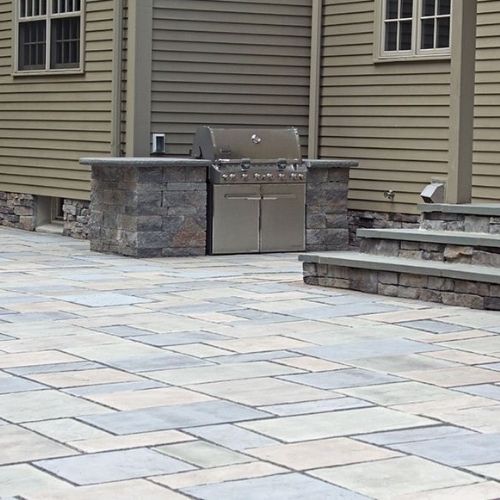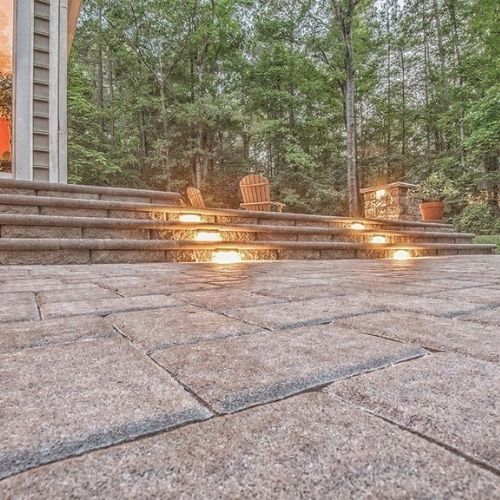Are you interested in patio pavers, but are unsure if pavers can be installed over your existing concrete or asphalt patio? Please read on for all the answers you need to get your landscape design project started!
Installing pavers for your new patio can dramatically improve the appearance and functionality of your patio. One of the major expenses when installing your new paver patio can be excavating an existing concrete or asphalt patio.

To help curb the expense, installing the new pavers on top of an existing concrete or asphalt patio is sometimes possible in what’s called a paver overlay. If you have an existing concrete or asphalt patio, it is possible to overlay your new pavers on top. A concrete base can be an excellent footing for your new paver patio.
Before installation, however, you need to inspect the condition of the concrete.
If the concrete has large cracks and heaves, then it’s not recommended to install pavers.
You also want to consider drainage. The concrete should have a slight pitch, enough to move water away. If the concrete does not have an adequate pitch, you can drill small holes into the concrete to allow water to seep into the ground.
Lastly, when overlaying with pavers, you will be raising the grade approximately 3″. You need to check doors, steps, siding, and other structures that may be affected.
Once you’ve established the concrete is ready for pavers, you can begin with your installation.
You begin by adding 1/2″ of bedding sand over the concrete. You can use a masonry sand mix.

Next, you install your pavers.
You will want to extend the outside edge by approximately 12″ by adding a compacted gravel base, allowing you to add edge restraints to keep the pavers tight together. Otherwise, the outside edge would have nothing to keep it firmly in place.
Once the paver installation is complete, you add your polymeric joint sand and compact the patio. Run your plate compactor over the top of the pavers, or use a rubber mallet. Repeat this step until all paver joints have been filled. Sweep away all excess polymeric sand and spray a light coat of water to the paver surface. Try to stay off the patio 1-2 hours to allow the polymeric sand to harden.
Overlaying pavers on existing asphalt is also possible. However, this is not something we recommend. Asphalt is subject to freeze/thaw when exposed to extreme temperatures, resulting in shifting and settling to the surface of the new pavers.
Overlaying concrete pavers is an excellent way to increase your homes curb appeal and functionality. Make sure to consider these tips before starting your overlay project.If you’d like to learn more about overlaying pavers on an existing concrete or asphalt patio to improve the look of your home, give the experts at JM Mento Landscape Design a call at 617-842-8123. We can help you design the perfect solution to meet your unique needs. Our knowledgeable team members are ready to help you create the outdoor living space you’ve been dreaming about!
Check out our gallery for newly completed landscape design projects, and get inspired for your next landscape design remodel!
Follow JM Mento Landscape Design on Facebook, Twitter, Instagram, Pinterest, and Houzz for company updates, landscape design inspiration, and more!






0 Comments